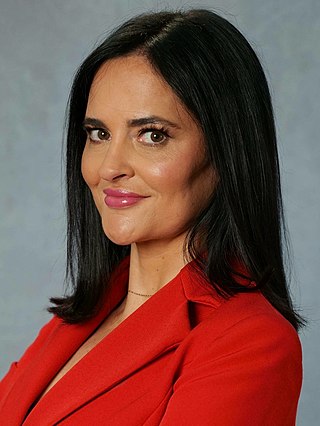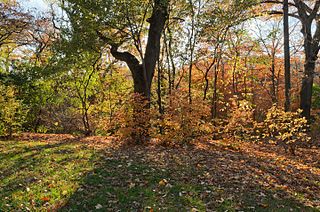Carlo Giuliani was an Italian anti-globalization protester who was shot dead while attacking a Carabinieri van with a fire extinguisher, by an officer who was inside the van, during the anti-globalization riots outside the July 2001 G8 summit in Genoa, Italy, making his the first death during an anti-globalization demonstration since the movement's rise from the 1999 Seattle WTO protests.

The New York City Landmarks Preservation Commission (LPC) is the New York City agency charged with administering the city's Landmarks Preservation Law. The LPC is responsible for protecting New York City's architecturally, historically, and culturally significant buildings and sites by granting them landmark or historic district status, and regulating them after designation. It is the largest municipal preservation agency in the nation. As of July 1, 2020, the LPC has designated more than 37,800 landmark properties in all five boroughs. Most of these are concentrated in historic districts, although there are over a thousand individual landmarks, as well as numerous interior and scenic landmarks.

East River Park, also called John V. Lindsay East River Park, is 57.5-acre (20 ha) public park located on the Lower East Side of Manhattan, administered by the New York City Department of Parks and Recreation. Bisected by the Williamsburg Bridge, it stretches along the East River from Montgomery Street up to 12th Street on the east side of the FDR Drive. Its now-demolished amphitheater, built in 1941 just south of Grand Street, had been reconstructed and was often used for public performances. The park includes football, baseball, and soccer fields; tennis, basketball, and handball courts; a running track; and bike paths, including the East River Greenway, all of which are to be demolished. Fishing is another popular activity, for now.

The New York Marriott Marquis is a Marriott hotel on Times Square, in the Theater District of Midtown Manhattan in New York City. Designed by architect John C. Portman Jr., the hotel is at 1535 Broadway, between 45th and 46th Streets. With 1,966 rooms and 101,000 sq ft (9,400 m2) of meeting space, it is one of the largest hotels in the city.

The New York Coliseum was a convention center that stood at Columbus Circle in Manhattan, New York City, from 1956 to 2000. It was designed by architects Leon Levy and Lionel Levy in a modified International Style, and included both a low building with exhibition space and a 26-story office block. The project also included the construction of a housing development directly behind the complex.

New York City's Theater District, sometimes spelled Theatre District and officially zoned as the "Theater Subdistrict", is an area and neighborhood in Midtown Manhattan where most Broadway theaters are located, in addition to other theaters, movie theaters, restaurants, hotels, and other places of entertainment. It is bounded by West 40th Street on the south, West 54th Street on the north, Sixth Avenue on the east and Eighth Avenue on the west, and includes Times Square. The Great White Way is the name given to the section of Broadway which runs through the Theater District.

New York held various elections on November 7, 2006. Most notably, elections were held for the state governor, attorney general, comptroller, and for the U.S. Senate, all of which saw Democrats win and build on their existing majority. While Democrats had already been a strong force in the New York City area, most of the Democratic gains in 2006 occurred upstate. Former Attorney General Eliot Spitzer won the 2006 gubernatorial election by a record margin, while Andrew Cuomo replaced him as the new attorney general. Alan Hevesi was re-elected as comptroller, despite mounting ethics concerns. Hillary Clinton was re-elected to the Senate. For the first time in over 50 years, all major statewide elected offices were held by one party. For the first time in over 60 years, they were all held by Democrats.
The Inner Circle is an American parody group made up of seasoned reporters, bloggers, web journalists, and television and radio personalities. It hosts an event every year in March at the New York Hilton, and each year the show has a different theme. There is a strict "No Professional Talent" rule.

La Plaza Cultural de Armando Perez is a community garden and public green space in the East Village neighborhood of Manhattan, New York City. Serving as a community garden, park, playground, wildlife refuge, urban farm, community composting site, and performance venue, La Plaza Cultural is also utilized by local day-care centers, after-school programs and a growing number of parents with small children. The garden has been known to grow a number of various edible plants including fruits, vegetable, and herbs. The lot is approximately 0.64 acres and consists of at least 11 members.

Pennsylvania Station was a historic railroad station in New York City that was built for, named after, and originally occupied by the Pennsylvania Railroad (PRR). The station occupied an 8-acre (3.2 ha) plot bounded by Seventh and Eighth Avenues and 31st and 33rd Streets in Midtown Manhattan. As the station shared its name with several stations in other cities, it was sometimes called New York Pennsylvania Station. Originally completed in 1910, the aboveground portions of the building were demolished in 1963, and the underground concourses and platforms were heavily renovated to form the current Pennsylvania Station within the same footprint.

Vietnam Veterans Plaza is an American memorial plaza in Manhattan, New York. It honors New York City citizens who served during the 20th-century Vietnam War.
Rudy Washington is a former American politician. Washington served as Deputy Mayor of New York City under former Mayor Rudy Giuliani. Washington was the only African American to serve as Deputy Mayor under Giuliani.
Community gardens in New York City are urban green spaces created and cared for by city residents who steward the often underutilized land. There are over 550 community gardens on city property, over 745 school gardens, over 100 gardens in land trusts, and over 700 gardens at public housing developments throughout New York City. The community garden movement in NYC began in the Lower East Side during the disrepair of the 1960s on vacant, unused land. These first gardens were tended without governmental permission or assistance.

The Concert Grove is a section of Prospect Park, Brooklyn, New York City, that historically functioned as an outdoor music venue. It still serves as a sculpture garden lined with busts of musical figures, largely put up by German American Sängerfest participants and other cultural groups. The Concert Grove also includes the Concert Grove Pavilion, formerly known as the Oriental Pavilion, and adjoins a Lincoln sculpture facing the lake.

Lis Smith is an American political strategist affiliated with the Democratic Party. She is most well known for being the senior advisor for Pete Buttigieg's 2020 presidential campaign and the director of rapid response for Barack Obama's 2012 campaign. She has also directed communications and strategy for a number of other gubernatorial, mayoral and congressional campaigns.

Carmen Pabón del Amanecer Jardín, also known as Carmen's Garden and El Bello Amanecer Boriqueño Garden, is a 4,635-square-foot (430.6 m2) community garden at 117 Avenue C, in the East Village of Manhattan, New York City. Carmen Pabón del Amanecer Jardín is named after Carmen Pabon, a Lower East Side poet and gardener who died in 2016 at the age of 95.
The Green Guerillas are a community group of horticulturalists, gardeners, botanists, and planners who work to turn abandoned or empty spaces in New York City into gardens. Formed in the 1970s, the group threw "seed grenades" into derelict lots and developed community gardens, often without going through official channels. It became especially popular after the concerted redevelopment of a dangerous, trash-filled space at the corner of Houston Street and Bowery in Manhattan. The resulting press coverage and word of mouth led the group to broaden its activities from active gardening to education, training, and support for a number of community groups working on their own gardens. The Green Guerillas have been credited with beginning the community garden movement and popularizing the idea of guerilla gardening.

Grand Central Tower was a scrapped proposal by Penn Central to have a skyscraper built on top of Grand Central Terminal in 1968. It was designed by Marcel Breuer and would have been 950 feet (290 m) tall. The plan itself drew major opposition from the public and architects, especially from Jacqueline Kennedy Onassis, as it would have resulted in the destruction of the terminal. The plan was scrapped after it was settled in a court case in 1978, which meant Penn Central could not build the tower.

The Thain Family Forest is a 50-acre section of old-growth forest along the Bronx River in the New York Botanical Garden, for a time known as the Native Forest and historically as the Hemlock Grove. Its heritage dates in part to pre-colonial Lenapehoking. New York City acquired 4,000 acres as parkland in 1888, and in 1895 the New York Botanical Garden site was chosen here primarily due to the presence of the forest, which covers about one-fifth of the garden grounds. Founding director Nathaniel Lord Britton described the site as "the most precious natural possession of the city of New York". The canopy is in various zones such as oak, hemlock, beech, sweet gum and mixed. The eastern hemlock, the forest's original namesake, declined in the early 20th century, due to the hemlock woolly adelgid and the elongate hemlock scale. Its 2011 redevelopment was supported by John Thain and Carmen Thain, and included the removal of non-native species as well as the expansion of native ones. Several walking trails traverse the forest. Appointed in 2021, Eliot Nagele serves as the Director of the Thain Family Forest.















